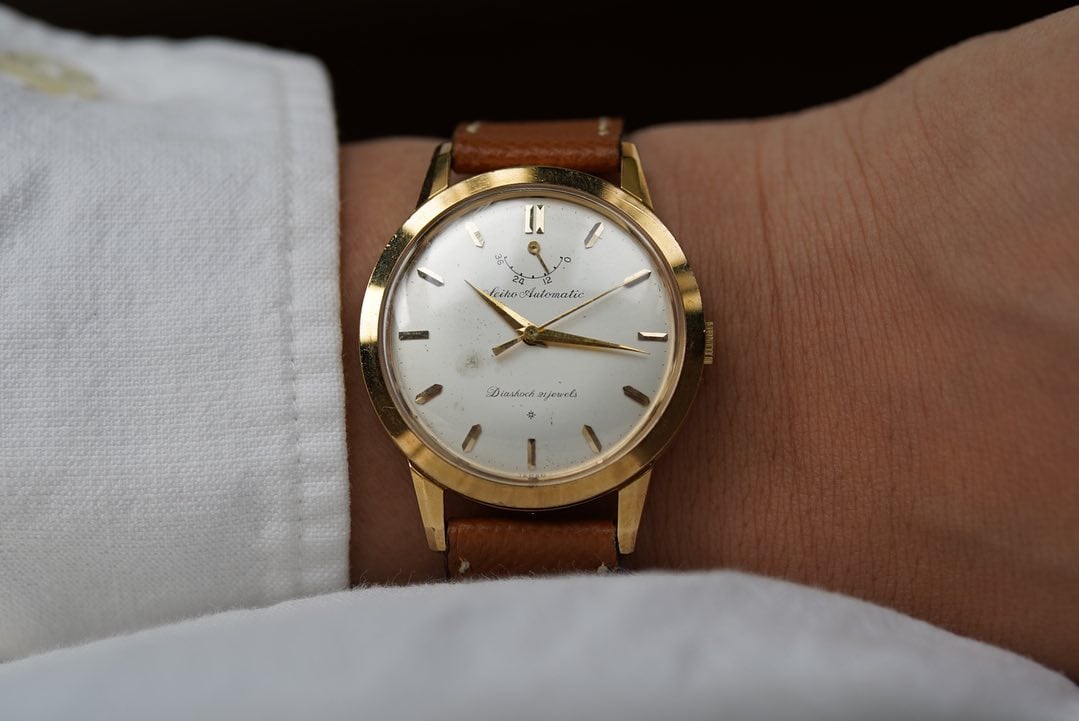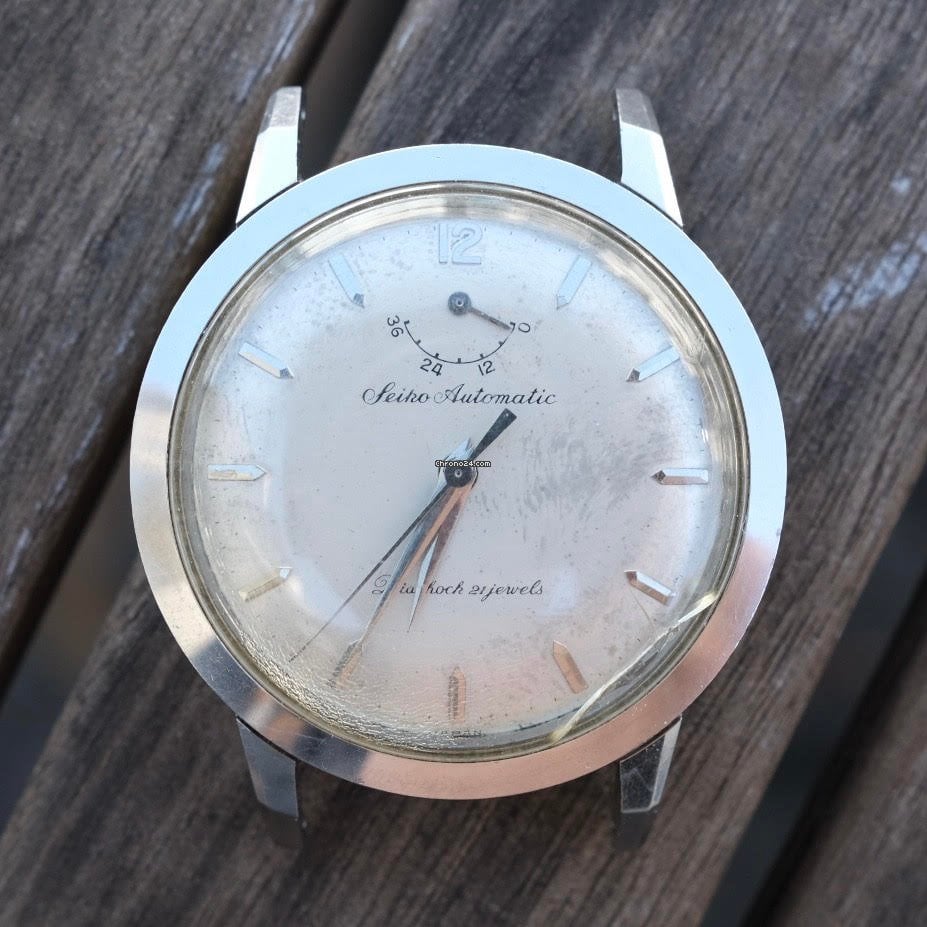Dear Seiko, Bring Back The Early Automatic 11A “Indicator”
Every watch enthusiast can think of a great discontinued timepiece that should return to the spotlight. Not as a reissue, but as a worthy successor to the original. An original 2.0, if you will. That’s what we talk about at the Fratello offices. And these talks inspired us to come up with a series about watches that the Fratello editors would like to see make a comeback. Some watches are iconic, some of them are less popular. But all of them are loved by at least one of our editors. Let’s look at some of our favorites in this series. This time, it’s Tomas who wants the 1950s Seiko 11A Indicator redone.
In Fratello team discussions, we regularly dive deep into the archives of a brand to talk about some watches from the past that we love. As a result, the question, “Wouldn’t it be great if the brand brought this back?” often arises. It has become the central theme of this series. Despite our excitement, we don’t expect brands to bring them back. There are often valid strategic and commercial reasons not to bring back the models we will be mentioning. But this series is not based on a watch’s commercial success. The series is based on the love that we have for these gems of the industry, and Tomas has a lot of love for the Seiko 11A.
The Seiko 11A Indicator
Getting your hands on a solid example of an automatic Seiko 11A Indicator is not very easy. I have been searching for one for maybe two years now, but I haven’t been lucky yet. There were and there are a few “beaten” examples, but the quality benchmark that I put on this one is very high. This one deserves to be nice.
I bet the rather tiny Seiko 11A Indicator featured today may surprise many of you. After all, it’s not a super popular or famous watch. But it is a special one, and I’d like to take this chance to recall the 11A and consider its revival.
Basic facts about the Seiko 11A
If you’ve never seen or heard of the Seiko 11A Indicator before, don’t panic. It’s a decent piece mostly known among hardcore Seiko collectors. Its 35mm diameter sentences it to sit in the drawer rather than on your wrist as a daily watch. There are multiple gold-plated and steel versions of this watch, so you might find them signed with different references like 14009, 14015, 14040, 14043, or my preferred 14060. They are all important for two major aspects. They represent the first automatic watches from Seiko and they all carry a very traditional power reserve indicator design that I find nostalgically romantic.
A kind of Swiss Seiko
The Seiko 11A is the first automatic movement from Seiko. A purist may feel uncomfortable, however, knowing that the Seiko 11A is basically an A. Schild 1382 movement. The first “honest” automatic developed in-house by Seiko came with the Gyro Marvels. The AS 1382, with minor changes, can be found in a dozen other watches with a similar power reserve indicator. To name a few, you can find the AS 1382 in Rotary, Tradition, George’s, Chevron, Hallmark, Lucien Piccard, or even scarce Heuer Automatic watches.
Differences
As I mentioned earlier, there are more references out there. What you should keep in mind is that the earliest 14015 from 1955 has a 17-jewel movement. I am searching for the later 1958-1959 ref. 14060 in steel that grew from 35mm to 36mm. This reference has a 21-jewel movement, as well as has some minor case and dial updates that make it even more dressy. The crown on the 14060 is hidden in the case making for an even cleaner look. Thanks to the 18mm lug width, the otherwise pretty tiny Seiko Indicator looks quite modern on the wrist. Based on many watches I have, the 17mm strap is the breaking point where I feel I am moving into the “junior” watch-league.
- Seiko Indicator currently available on Chrono24
Power Reserve Indicator
Some find the power reserve indicator a useless or self-centered complication. When integrated in an automatic watch, these people often chuckle and shake their heads at what a silly idea it is to put this indicator on it. I am on the other end of the spectrum, someone who finds the power reserve indicator a very vivid and amusing addition to the dial. While other complications like the date or moonphase relate to external circumstances, the power reserve is highly connected to the heart of the watch. If the power indicator dies, the watch dies too.
Different power reserve
I always like it best when there is no other complication paired with a power reserve indicator on the dial. When you look at current production, there isn’t much to choose from. In that aspect, this old Seiko shines big time. With prime real estate under 12 o’clock, the power reserve complication becomes a statement. It’s not like some supporting count-me-in-as-well feature hidden between 7 and 8 o’clock. The power reserve indicator becomes the king of the dial. The sun over the horizon, if you will.
Classy Seiko
If you compare the Seiko Automatic Indicator ref. 14060 in steel with earlier references, you will understand why I like it much more. Earlier models have an “S” logo that is quite high and interferes with the power reserve indication gauge. The later 14060 has a gentle “Seiko Automatic” signature instead. This beautiful writing is beyond lovely. The arch scale is rather simple, with no bolder print or colorful highlights for low-energy display. It’s one of the oldest power reserve indicators with a classic hand pointing to the actual reserve left. I find a hand-based indication way more classy than a window aperture in the dial showing a disc rotating underneath.
Last thoughts
There are many watches with this style of power reserve indicator. I’ve kept my eyes open and also set them on Oris or Zodiac. But when the opportunity came to pick up those pieces, I always ended up wanting the Seiko 11A more. These days, Seiko is looking into its back catalog more often, and who knows? I assume the 11A is not the number-one candidate for a re-edition, but I genuinely believe it could be a pleasant surprise that finds its audience. Especially if it keeps its dressy attire with simple, but interesting indexes and no lume at all.
Would you like to see it come back too? Let me know if I’m on to something in the comments.








